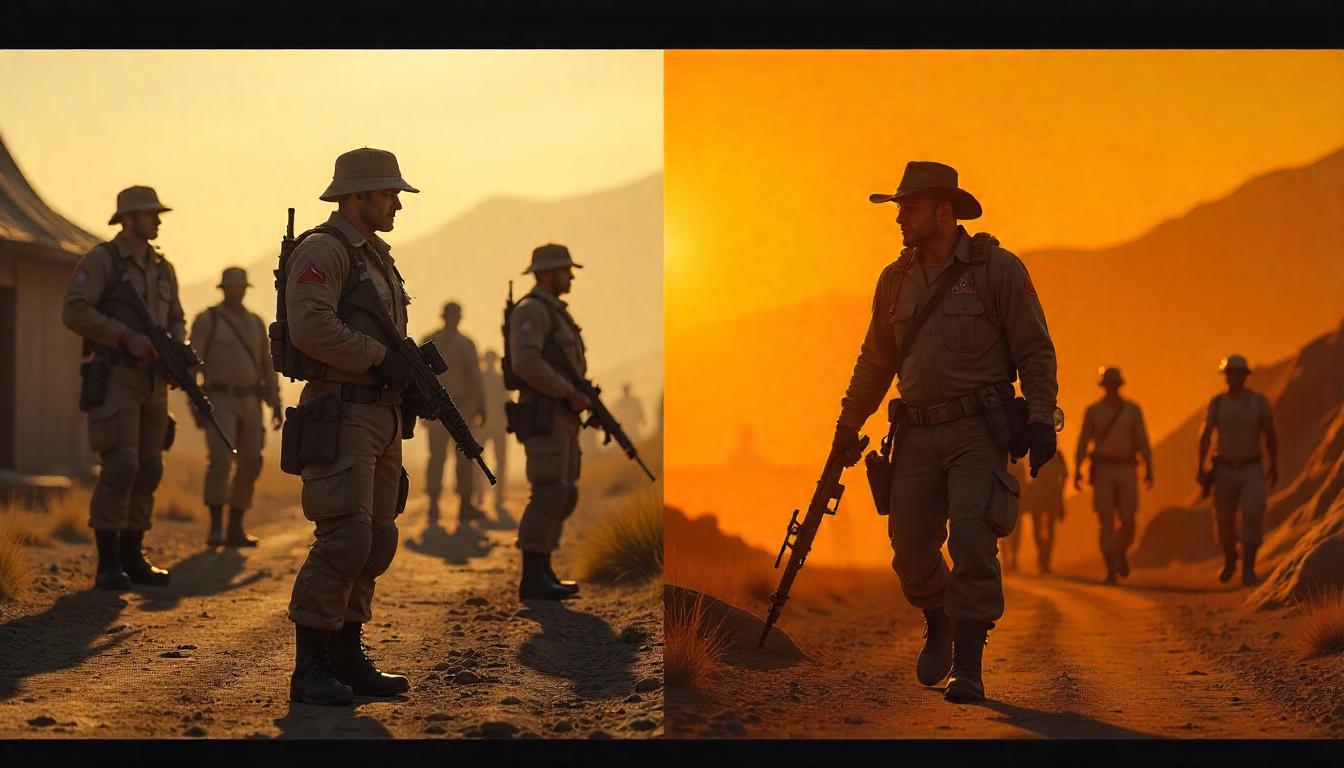Bethesda’s RPGs have long been the gold standard in open-world experiences, with Fallout 4 (2015) and Starfield (2023) standing as two of the most ambitious games in their respective genres. While both games share the DNA of Bethesda’s trademark open-world formula, they offer distinct experiences in RPG mechanics, world-building, storytelling, and character progression. In this analysis, we’ll dissect these elements to determine which game delivers the superior role-playing experience.
RPG Mechanics: Depth vs. Customization
Fallout 4 follows the traditional Bethesda RPG model but streamlines certain mechanics from its predecessor, Fallout: New Vegas. The SPECIAL (Strength, Perception, Endurance, Charisma, Intelligence, Agility, Luck) system determines character stats, with perks allowing deeper specialization. While this system offers clear progression, it removes skill points, which limits the nuance of individual stat management.
Starfield, on the other hand, returns to a skill-based progression system akin to Skyrim’s, where players earn experience and spend points to unlock and upgrade abilities. Unlike Fallout 4, Starfield requires players to complete challenges to further upgrade skills, adding a layer of engagement beyond simply leveling up. The addition of unique skills tied to zero-gravity combat, spaceship piloting, and persuasion further differentiates Starfield’s RPG mechanics.
Verdict: Starfield’s system offers greater customization and progression depth, making it the more RPG-focused experience.
Open-World Design: Dense Post-Apocalypse vs. Vast Galactic Sandbox
Fallout 4’s open world is a handcrafted, dense wasteland filled with environmental storytelling. Every location tells a story, from abandoned buildings to hidden vaults. The world is packed with random encounters, factions like the Brotherhood of Steel and the Minutemen, and a settlement-building mechanic that allows players to reshape the wasteland.
Starfield’s open-world approach is fundamentally different, emphasizing scale over density. With over 1,000 planets, the game promises vast exploration opportunities, but procedurally generated landscapes often lack the handcrafted depth of Fallout 4’s environments. While major cities like New Atlantis and Neon are rich in lore and detail, many planets feel barren, making exploration more of a numbers game than an immersive experience.
Verdict: Fallout 4’s handcrafted world is more immersive and engaging, while Starfield’s scale offers grander exploration but at the cost of depth.
Storytelling: Personal vs. Cosmic
Fallout 4’s narrative is deeply personal, focusing on the Sole Survivor’s search for their kidnapped son. While the overarching plot is straightforward, the game features multiple factions—The Institute, Brotherhood of Steel, Railroad, and Minutemen—offering moral dilemmas and branching paths. However, the voiced protagonist limits role-playing flexibility, as dialogue choices are often simplified.
Starfield presents a more expansive narrative centered on humanity’s role in the cosmos. As a member of Constellation, the player embarks on a journey to uncover the secrets of mysterious artifacts. The story delves into existential and philosophical themes, but the factions—such as the United Colonies and Freestar Collective—often feel less morally ambiguous than those in Fallout 4. Unlike Fallout 4, Starfield reintroduces a silent protagonist, allowing for more dialogue variety.
Verdict: Fallout 4’s story is more emotionally gripping, but Starfield’s narrative scope is larger and offers greater role-playing freedom.
Character Progression: Perks vs. Skills
Character progression is a key pillar of RPGs, and both games take different approaches. Fallout 4’s perk chart system allows for flexible builds but lacks the depth of traditional RPG stat allocation. Perks are tied to the SPECIAL system, with higher attributes unlocking more powerful abilities. While this streamlines character growth, it can make progression feel less organic.
Starfield reintroduces a skill tree where players invest points into different categories—Physical, Social, Combat, Science, and Tech. Additionally, unlocking advanced skills requires completing in-game challenges, such as using a certain weapon type or persuading NPCs. This adds a sense of accomplishment to progression, making each skill investment feel earned.
Verdict: Starfield’s skill-based progression feels more rewarding and encourages experimentation.
Side Quests and Factions: Impact and Variety
Fallout 4’s side quests range from simple fetch quests to deep moral dilemmas. The faction system allows for multiple playthroughs with different alliances, each offering unique endings and consequences. However, the Minutemen quests become repetitive, and some choices feel less impactful compared to Fallout: New Vegas.
Starfield boasts a wider variety of quest types, from bounty hunting to corporate espionage. The faction system is more expansive, with groups like the Crimson Fleet offering dynamic paths for players to explore. The quest design is closer to Skyrim’s, providing varied and engaging activities, though some side content feels disconnected from the main narrative.
Verdict: Starfield’s faction system is broader, but Fallout 4’s side quests have more weight and consequence.
Combat and Gameplay: Shooter vs. Tactical Freedom
Fallout 4’s combat refines the gunplay from Fallout 3, making it more responsive while retaining the V.A.T.S. system, which allows for targeted shots in a slowed-down environment. The power armor system adds a unique layer to combat, turning players into walking tanks, while weapon modification encourages experimentation.
Starfield’s combat shifts towards a more fluid first-person shooter experience, with jetpacks adding verticality and space combat introducing a new dynamic. Zero-gravity battles and ship dogfights bring variety, though the lack of a V.A.T.S.-like system removes the tactical depth that Fallout fans might appreciate.
Verdict: Fallout 4’s combat is more tactical, while Starfield’s is more fluid and dynamic.
Settlement and Base Building: Grounded vs. Galactic
Fallout 4’s settlement system is one of its most unique features, allowing players to rebuild the wasteland. Settlements provide resource management, defense mechanics, and NPC recruitment, making them integral to gameplay.
Starfield expands this concept with planetary outposts, where players can mine resources, automate production, and create living spaces on different planets. While it offers more freedom, the system feels more detached from the core gameplay loop compared to Fallout 4’s settlements, which directly impact the world.
Verdict: Fallout 4’s settlement system is more integrated and meaningful, while Starfield’s outposts cater to a more sandbox-oriented experience.
Conclusion: Which Game Offers the Better RPG Experience?
Ultimately, the answer depends on what kind of RPG experience players seek.
- For those who enjoy handcrafted worlds, deep faction-based storytelling, and meaningful character choices, Fallout 4 remains the better experience.
- For players who prefer vast exploration, intricate skill progression, and a more open-ended role-playing system, Starfield is the superior choice.
While Fallout 4 offers a more personal, choice-driven RPG with rich environmental storytelling, Starfield expands the formula into the vastness of space, providing an unparalleled sense of scale and freedom. Both games excel in different aspects, making them essential experiences for RPG enthusiasts.






Leave a Reply